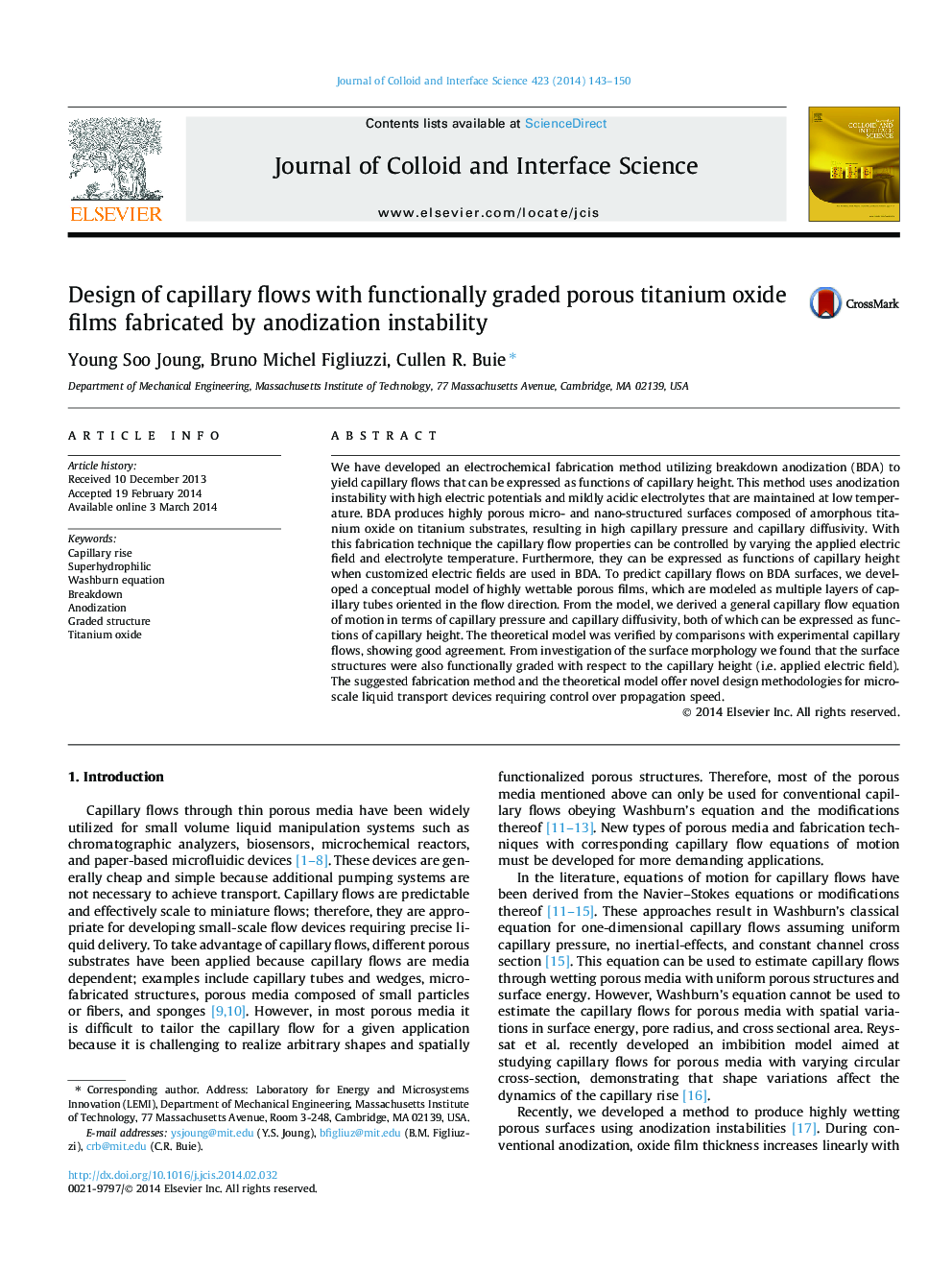| کد مقاله | کد نشریه | سال انتشار | مقاله انگلیسی | نسخه تمام متن |
|---|---|---|---|---|
| 607288 | 1454572 | 2014 | 8 صفحه PDF | دانلود رایگان |
• Anodization instability was used to produce highly wettable porous films.
• Functionally graded porous films were produced using electric fields during anodization.
• A capillary tube model was suggested to predict capillary flows on the porous films.
• The model and corresponding electric fields can be used to tailor capillary flows.
• This result can be used for novel devices employing the control of capillary flows.
We have developed an electrochemical fabrication method utilizing breakdown anodization (BDA) to yield capillary flows that can be expressed as functions of capillary height. This method uses anodization instability with high electric potentials and mildly acidic electrolytes that are maintained at low temperature. BDA produces highly porous micro- and nano-structured surfaces composed of amorphous titanium oxide on titanium substrates, resulting in high capillary pressure and capillary diffusivity. With this fabrication technique the capillary flow properties can be controlled by varying the applied electric field and electrolyte temperature. Furthermore, they can be expressed as functions of capillary height when customized electric fields are used in BDA. To predict capillary flows on BDA surfaces, we developed a conceptual model of highly wettable porous films, which are modeled as multiple layers of capillary tubes oriented in the flow direction. From the model, we derived a general capillary flow equation of motion in terms of capillary pressure and capillary diffusivity, both of which can be expressed as functions of capillary height. The theoretical model was verified by comparisons with experimental capillary flows, showing good agreement. From investigation of the surface morphology we found that the surface structures were also functionally graded with respect to the capillary height (i.e. applied electric field). The suggested fabrication method and the theoretical model offer novel design methodologies for microscale liquid transport devices requiring control over propagation speed.
Figure optionsDownload high-quality image (131 K)Download as PowerPoint slide
Journal: Journal of Colloid and Interface Science - Volume 423, 1 June 2014, Pages 143–150
